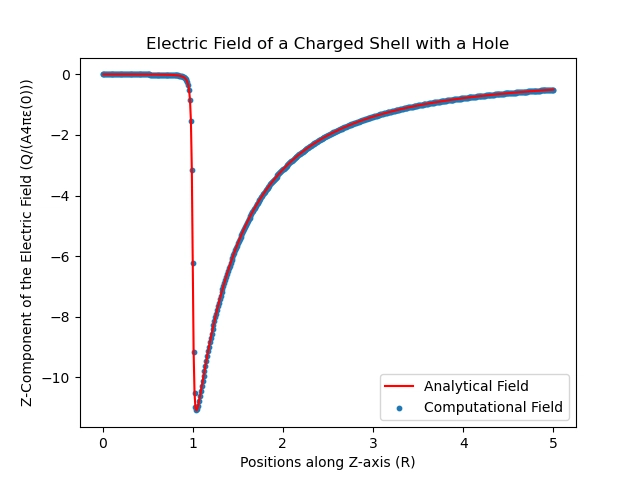GPT-5 Just Dropped. Here’s Why Your Automation Stack Is Already Outdated
The release of GPT-5 isn’t a routine update. It’s a line in the sand.
With persistent memory, smarter reasoning, and multi-turn contextual depth, GPT-5 is a signal to developers and tech teams: your current automation stack is already behind.
At Scalevise, we don’t just observe these shifts we build on them. Here’s how GPT-5 changes the game and why businesses must adapt now.
Persistent Memory = Business Context at Scale
GPT-5 introduces persistent memory meaning your agents remember what happened last week, what the client said three calls ago, and how your workflows behave across systems.
This is the holy grail for:
- AI onboarding agents
- Sales qualification bots
- Internal copilots
- Compliance-tracking flows
See how memory-enabled agents work:
👉 How We Built Memory-Integrated Agents With GPT-5
Automation Is Now Conversational, Not Static
With GPT-5, flows no longer follow “if this then that”. They negotiate, reason, and adapt.
Want your CRM to act like an actual assistant?
We’ve already deployed agents that:
- Score leads dynamically
- Fill gaps in sales data
- Handle human-like escalation paths
🔍 Check the full lead agent blueprint
It’s Not Just OpenAI vs Anthropic. It’s About Business Fit.
Everyone’s comparing Claude 4.1, Perplexity, and GPT-5. But most devs miss the point: you don’t need the “best model,” you need the right one for your use case.
We broke it down here:
🧠 GPT-5 vs Claude Opus 4.1: The Real Differences
⚔️ Amazon Kiro vs Perplexity Comet vs GPT-5 Agents
Compliance Nightmares Incoming?
GPT-5’s memory means businesses must rethink:
- GDPR strategy
- Data retention policies
- Session handling across tools
We covered what CTOs and DPOs need to know here:
🛡️ GPT-5 Persistent Memory: Privacy Blessing or Compliance Nightmare?
This Isn’t Theory. We’re Already Deploying.
At Scalevise, we’ve implemented GPT-5:
- Inside CRM pipelines
- In onboarding sequences
- To power middleware flows
- For real-time human-AI collaboration
Want to see how we deploy this in actual businesses?
🚀 See our GPT-5 for Business Use Cases
Real-World GPT-5 Business Use Cases From Scalevise
While most are still testing GPT-5 in playgrounds and sandbox demos, we’ve gone much further. At Scalevise, we’ve already deployed it inside mission-critical business workflows — and the results are promising.
Here’s a breakdown of real, working use cases where GPT-5 delivers massive ROI right now.
1. Smart Sales Agents That Qualify and Score Leads
Using GPT-5’s persistent memory, we built a conversational AI sales agent that:
- Captures and enriches lead data via website chat
- Classifies intent, urgency, and buying signals
- Pushes data directly into CRMs like HubSpot and Pipedrive
- Re-engages cold leads with contextual follow-ups
Instead of relying on marketing forms, this agent holds natural conversations and qualifies leads 24/7 — reducing manual sales hours by over 70%.
Read the full implementation:
👉 AI Agent for Lead Qualification With GPT-5
2. Enterprise Onboarding Agents With Embedded Compliance Logic
We’ve helped an HR platform deploy a GPT-5 agent to handle:
- Employee onboarding guidance
- Localized labor law explanations (GDPR, contracts, etc.)
- Auto-generated documents based on user inputs
- Integration with signing flows and ticketing systems
Because of GPT-5’s deeper contextual retention, these agents don’t start from scratch every time. They retain context across steps and provide smoother handovers — reducing drop-off and legal risk.
3. Automated Technical Support With Long-Term Context
Forget keyword bots.
We deployed a GPT-5-powered technical support agent that:
- Understands prior issues reported by the user
- Troubleshoots based on past configurations
- Summarizes logs, errors, and documentation in real time
These agents are integrated with internal helpdesks (like Jira Service Management), and they escalate only when necessary. For one SaaS client, GPT-5 now resolves over 55% of L1/L2 tickets without human involvement.
4. GPT-5 Middleware for Cross-System Workflows
Most companies rely on rigid automation chains: webhook in, API out, done.
We’ve added GPT-5 as a reasoning layer in the middleware, enabling:
- Smart decision trees (e.g., route based on context or emotion)
- Conditional flows that adjust without reprogramming
- Interpretations of messy inputs (emails, files, unstructured text)
We use Make.com or custom Node.js bridges to connect GPT-5 with tools like Airtable, Trello, Notion, and more.
This is not about chat — this is about logic orchestration.
5. Compliance & Audit Copilots With Memory
We’re also working on GPT-5 agents for legal and compliance teams that:
- Track regulatory changes over time
- Assist in producing compliance documentation
- Recall previous interpretations and decisions
Because memory persists, these copilots function like a legal assistant who remembers what your compliance officer said last quarter — and explains how it applies now.
The Outcome: Smarter Workflows, Lower Cost, More Focus
Every one of these use cases leads to the same outcome:
→ You automate smarter.
→ Your teams focus on real decisions.
→ Your operations scale without bottlenecks.
And more importantly: you stay ahead of your competitors who are still testing GPT-4-level tools.
Want to See What GPT-5 Can Do For You?
We offer GPT-5 automation audits, agent implementations, and architecture strategy workshops.
Whether you’re in SaaS, HR, consulting, marketing, or e-commerce — GPT-5 has strategic impact waiting to be unlocked.
📬 Book a discovery call with Scalevise
Or explore more GPT-5 projects we’ve delivered:

